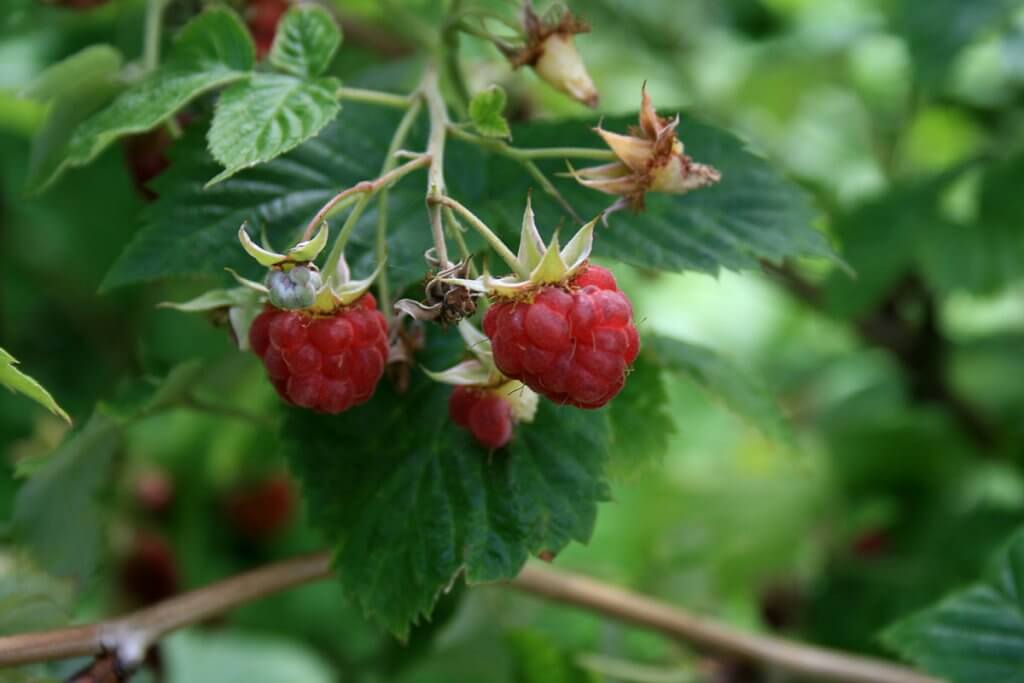
(Photo by: Karelj/Wikimedia Commons)
Do you know what Rubus is? It is a diverse genus of flowering plants in the Rosaceae family. Most Rubus plants are easily recognizable from their rough and prickly wood stems, much like the common thorny stems of rose plants. These stems are usually tangled, forming a bush called brambles. The fruits from a Rubus plant, often called bramble fruits as well, are classified as aggregate fruits. This means each fruit is made up of many drupelets.
From that explanation alone, you might not realize it, but you’ve probably encountered a lot of Rubus plants and fruits during your lifetime. Raspberry and blackberry are common Rubus plants. These berries are famous for their brilliant taste and great nutritional content. But they’re not the only wild edibles within this genus. There are many other Rubus plants which produce equally delicious and nutritious fruits.
In fact, Rubus fruits are widely consumed all over the world. The use of wild blackberries, raspberries, and other Rubus plants have been documented throughout the globe since ancient times. From Ancient Rome and Greece to China and India, many cultures regard plants in this genus highly as a health-inducing edible.
In this modern age, people only consume the tasty fruits of this plant. However, back in the days, our ancestors would use the entire plant to make all sorts of dishes and most importantly, traditional medicine. Roots, stems, leaves, flowers, and fruits, no part of Rubus plants would go wasted at the hands of our ancestors. Aside from eating them, they would use different plant parts to make tisanes, infusions, poultices, decoctions, and plasters.
Since this genus grows all throughout the world, you’ll definitely be able to find wild Rubus plants growing nearby, no matter where you are. Additionally, some plants have even been introduced to foreign lands. They eventually naturalized in their new habitats and become another wild edible for foragers to consume.
In this article, we’ll explore some of the less-known members of this genus: Wineberry, Thimbleberry, Common Dewberry, and Black Raspberry. Though somewhat underrated, these plants are a great and nutritious food source.
Wineberry
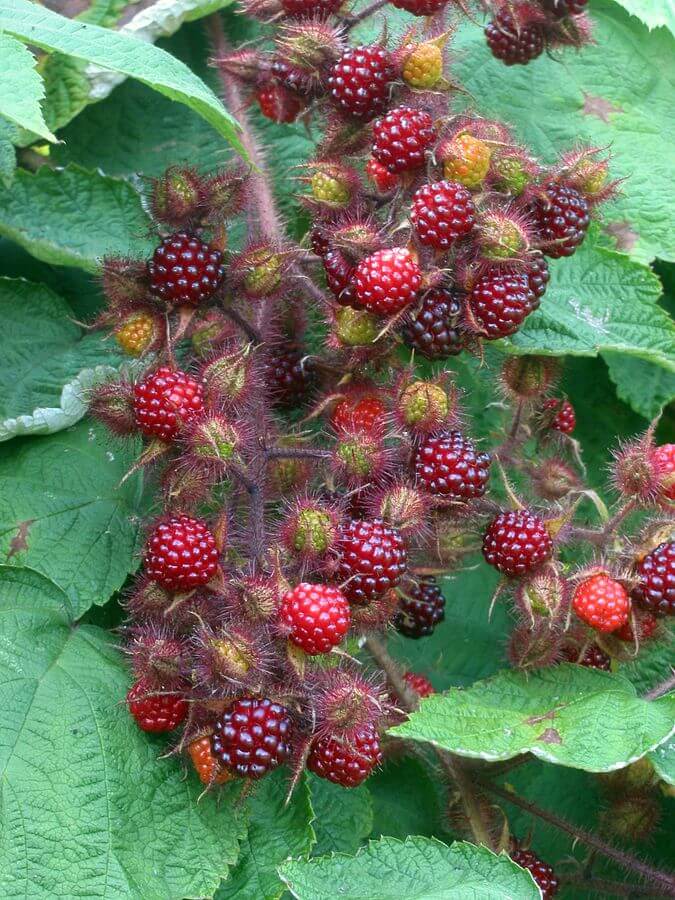
(Photo by: Rasbak/Wikimedia Commons)
The first Rubus plant comes from East Asia. It’s known as wineberry (Rubus phoenicolasius) due to its red, wine-colored fruits. Wineberry is very closely related to raspberry, gaining the reputation of being the Asian version of the common raspberry.
This perennial plant was first introduced to Europe and North America in the 19th century as an ornamental plant. Eventually, it naturalized in parts of those regions. Wineberry usually grows in sunny locations. In North America, you can find them in the mountains, on roadsides, and along the edges of fields and forests. Their most distinctive characteristics are their hairy, reddish stems and equally hairy, bright red berries.
Edibility and culinary use
If you love raspberries, you’ll definitely fall in love with wineberries as well. Wineberries taste just like the delicious raspberries, but juicier and slightly sweeter. These berries will definitely taste best eaten fresh right after harvest, but they can also be used in a variety of recipes. Wineberries will work great in sweet desserts, pies, fruit salads, and sauces.
You can use these berries to make jam and wine as well. In fact, wineberry wine is a popular alcoholic beverage. Research has also shown that wineberry wine has amazing health benefits. This beverage is very rich in antioxidants, containing even more than related fruit wines such as raspberry and strawberry wine. Drinking a serving of wineberry wine daily can boost the immune system, improve blood flow, reduce bad cholesterol, speed up weight loss, and increase overall health.
Note that these berries are rather fragile. They can only stay fresh for a few days after the harvest. But, you can extend their shelf life up to a couple of months by freezing them. And don’t worry, freezing wineberries will do little to diminish its juicy flavor and nutritional contents.
Thimbleberry
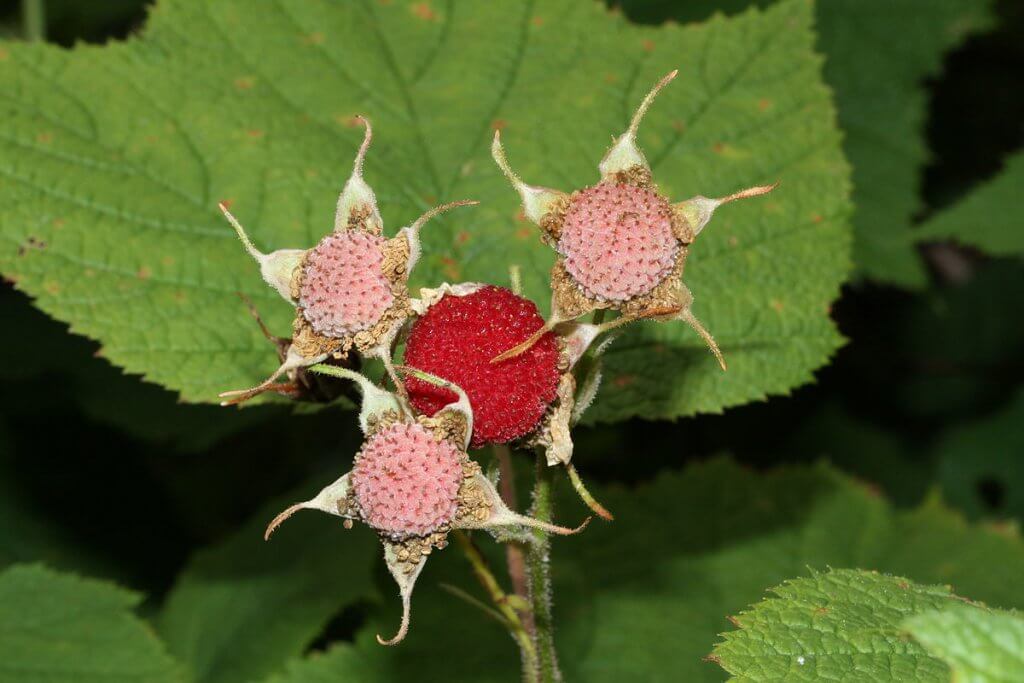
(Photo by: Walter Siegmund/Wikimedia Commons)
The next Rubus species, thimbleberry (Rubus parviflorus) is native to western North America. Thimbleberry shrubs grow in open woodland areas and on roadsides. These wild shrubs tend to be huge; some shrubs can even grow to be more than 8’ tall. But despite the plant’s large size, it has small white flowers and even smaller red berries which appears and ripens every summer.
Edibility and culinary use
Thimbleberries look similar to raspberries, only slightly smaller and flatter. Due to how soft and juicy they are, thimbleberries typically can only stay fresh for a couple of days after they’re picked. For this reason, people typically dry or freeze them right after harvesting them. This way, they can last longer. While fresh thimbleberries taste best, dried and frozen ones also taste delicious.
Aside from eating them on their own, thimbleberries can also be used in many different recipes. Their fresh sweet and sour flavor is usually used to enhance the taste of sweet desserts, vinaigrettes, and fruit salads. Lastly, you can also make thimbleberry jam by boiling equal volumes of berries and sugar until the mixture becomes thick.
Common Dewberry
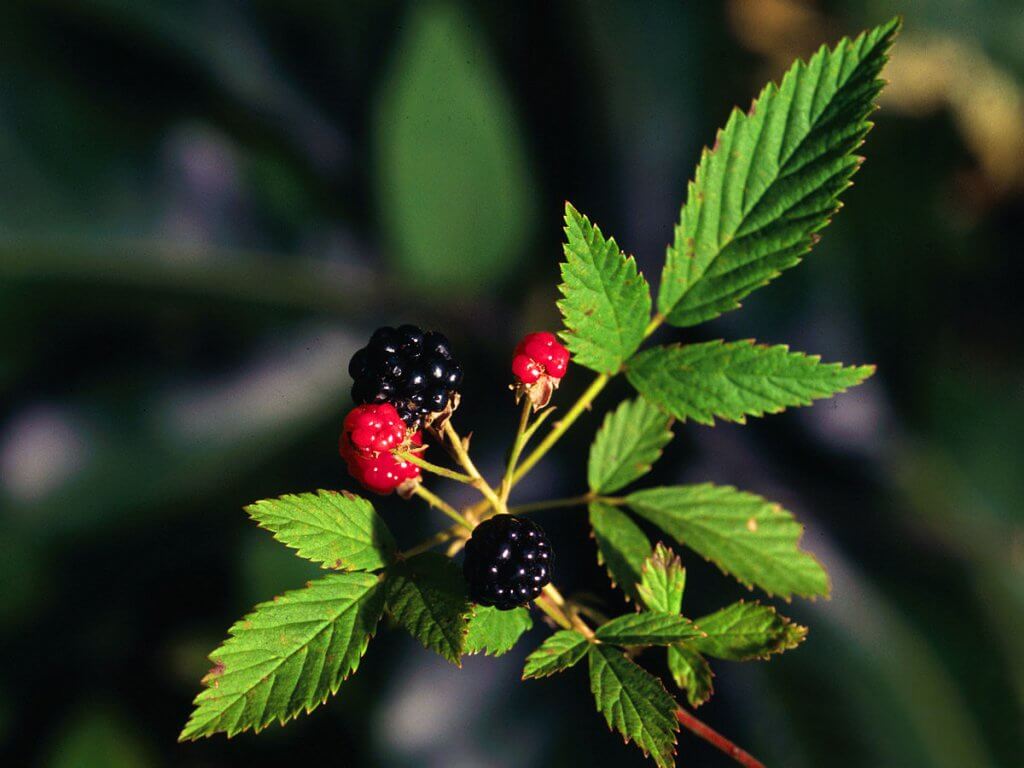
(Photo by: James H. Miller & Ted Bodner/Wikimedia Commons)
Unlike the first two Rubus plants, the common dewberry (Rubus flagellaris) is more closely related to blackberries. In fact, the fruits look very similar to blackberries, only slightly larger. They’re bright red when young and dark purple when ripe.
Also known as northern dewberry, this perennial plant is native to North America. It grows in almost every habitat you can think of, from deciduous forests to savannas.
Edibility and culinary use
Ripe dewberries are edible and they taste amazing. They have a rich sweet flavor with a hint of sourness. While they taste fantastic fresh, they can also be used in many different recipes. People mainly use dewberries to make pie fillings, cobblers, puddings, and other sweet desserts. Dewberries are also great for making jams, preserves, and sauces.
Aside from its fruits, dewberry leaves and stems are also edible. Dried dewberry leaves make a wonderful herbal tea. Meanwhile, young stems or shoots are typically peeled and eaten raw as a delicious snack.
Black Raspberry

(Photo by: 성락 + 연주/Wikimedia Commons)
Lastly, we have black raspberry (Rubus occidentalis) which is native to eastern North America. Unlike the previous Rubus plants, this one is actually rather well-known, especially in the medical community. Black raspberry has been touted as a super food. They contain more nutrients and three times more antioxidants than their red counterpart. The only reason why they’re not as popular as their red cousins in the market? People often have a hard time telling black raspberry apart from blackberry.
These tiny dark berries may look similar to blackberries, but they’re completely different. As its name suggests, black raspberries are dark-colored raspberries. So they’re shaped just like raspberries, with a hollow center and covered with fine hairs. In contrast, blackberries have a white core in the center.
Edibility and culinary use
This exotic looking fruit has a vibrant and rich taste. Black raspberries have a sweet and fruity taste. They’re also not as tart as blackberries and the more common red raspberries. Black raspberries taste great with just about any desserts you can think of, from pie and cobbler to pudding and sorbet. They also taste amazing when made into jams or preserves. Additionally, since they’re almost identical to their red cousins, you can use them as a substitute for any recipes which call for red raspberries.
Health Benefits
Rubus fruits are rich in essential nutrients. They contain vitamins A, B complex, C, E, and K as well as potassium, calcium, copper, iron, manganese, and magnesium. Eating them will improve the body’s immunity, help heal inflammations, promote a healthy cardiovascular system, strengthen the bones, improve vision, and boost your overall health. They’re also rich in dietary fibers. So, they will make you feel fuller longer while also regulating your blood sugar levels and improving your digestive system’s health.
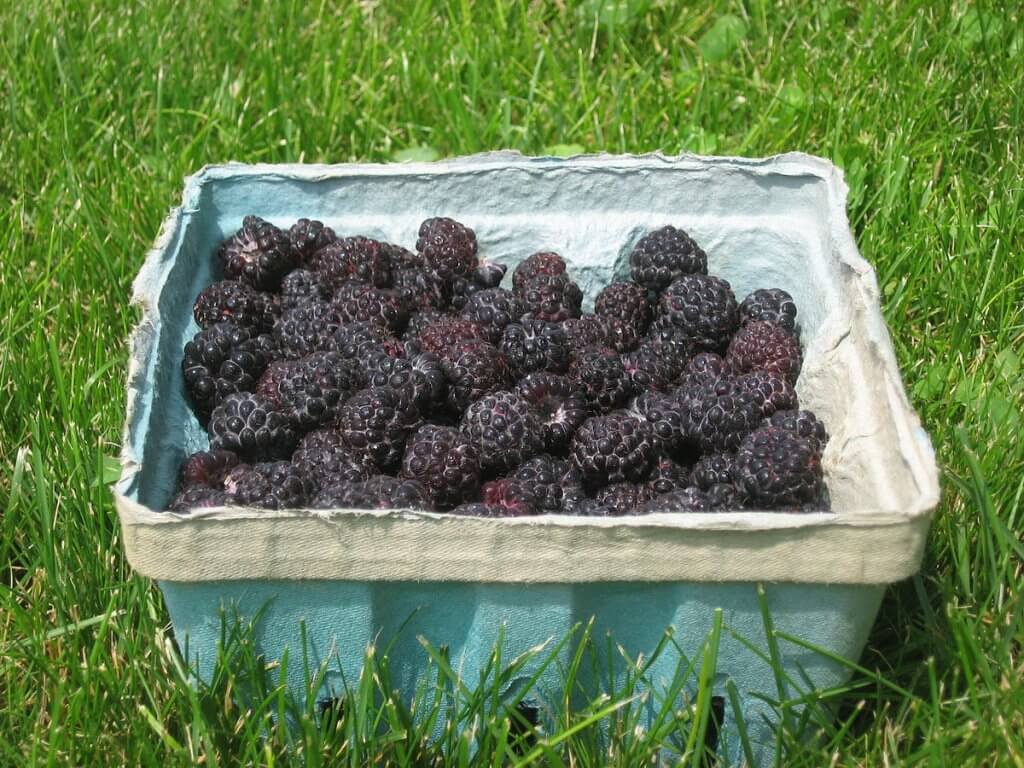
(Photo by: Nyttend/Wikimedia Commons)
These berries are also rich in antioxidants. This means they’re great for fighting off free radicals, slowing down cell aging, and preventing tumors as well as cancers. In fact, medical experts have been using their extracts to make medicine and health supplements. They believe that Rubus fruits can prevent DNA mutations as well as block the blood supply to tumors and cancer cells. Moreover, these delicious berries can also help cancer patients combat the adverse side effects of chemotherapy.
Aside from eating the fruits, you can also use the leaves and roots of most Rubus species to make herbal tea. While it doesn’t taste particularly delicious, this herbal tea has many health benefits. This tea is especially great for treating nausea, vomiting, diarrhea, and dysentery. If you don’t like the flavor of the tisane, try adding honey, sugar, or lemon juice to make it more palatable.
Use in folk medicine
Many societies around the world have been incorporating Rubus plants into their folk medicine tradition. People usually drink Rubus infusions and decoctions to treat many ailments. Generally, they’re used to treat diarrhea, dysentery, poor eyesight, nausea, and inflammations. The Greeks and Romans also use Rubus infusions to prevent vaginal discharge and female infertility. Meanwhile, the Chinese use them to treat impotence and male infertility.
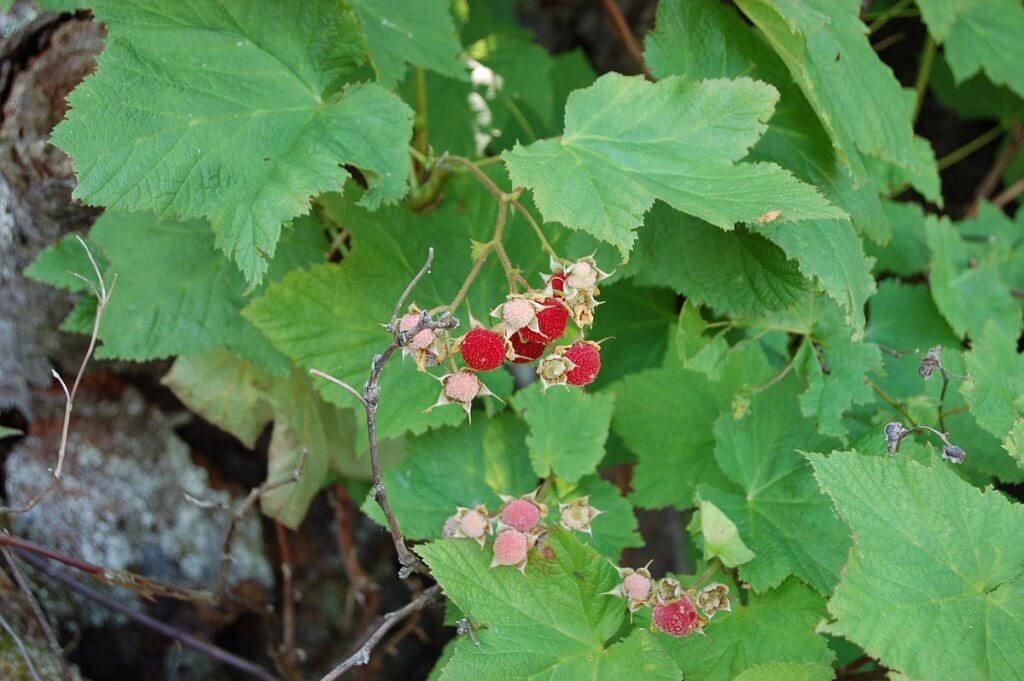
(Photo by: Jim Dexter/ Wikimedia Commons)
Additionally, it’s also common to apply infusions and decoctions topically or use them as a mouth gargle. Due to their antibacterial and antifungal properties, these infusions are great for washing wounds and preventing infections. When used as a gargle, they can also heal canker sores and bleeding gums. Sometimes, people also chew Rubus leaves to strengthen their gums and teeth. People also make poultices from dried, powdered thimbleberry leaves. These poultices can treat wounds, burns, and bruises.
Cautions
Not only are they delicious, but almost all berries in the Rubus family are also safe to eat. There are no known adverse side effects from consuming Rubus berries, both in food and medicinal amounts.
Conclusion
There are all sorts of Rubus plants out there, waiting to be discovered. So, why limit yourself to the common blackberries and red raspberries? Take a look around the local woodlands or even browse the farmer’s market, see if you can find other Rubus fruits. The four plants mentioned in this article barely scratched the surface of this amazing genus. Start your journey from there and discover even more healthy Rubus wild edibles later on.
---------------
Writen by Cornelia Tjandra
Cornelia is a freelance writer with a passion for bringing words to life and sharing useful information with the world. Her educational background in natural science and social issues has given her a broad base to approach various topics with ease. Learn more about her writing services on Upwork.com or contact her directly by email at cornelia.tjandra@gmail.com
Many of our readers find that subscribing to Eat The Planet is the best way to make sure they don't miss any of our valuable information about wild edibles.
See our privacy policy for more information about ads on this site

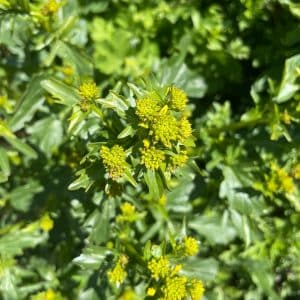
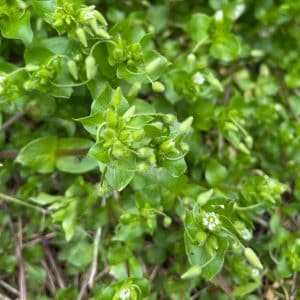
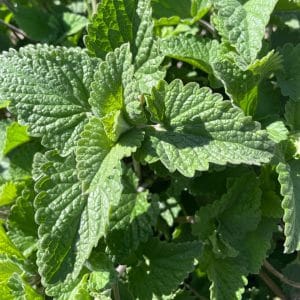


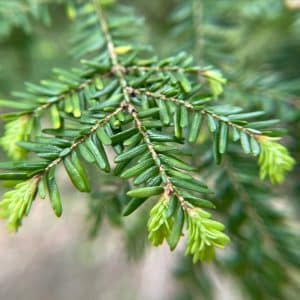
5 Responses
Are there side effects if you eat Wild Blackberries and Raspberries?
because the fruit is very rare and only grows in the forest
nice post.. i will waiting for the next post
nice post..
there side effects if you eat Wild Blackberries?
Thank you for nice information